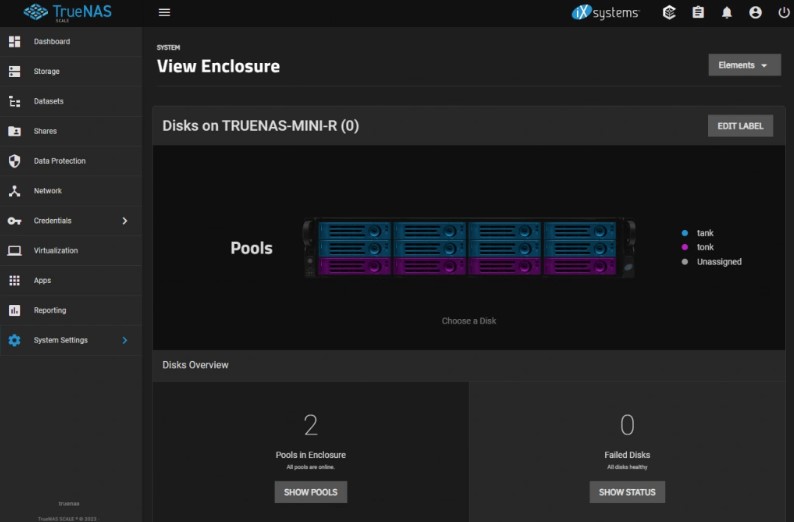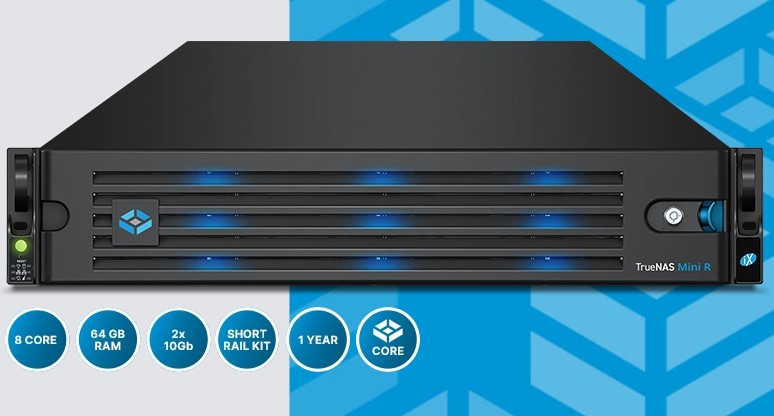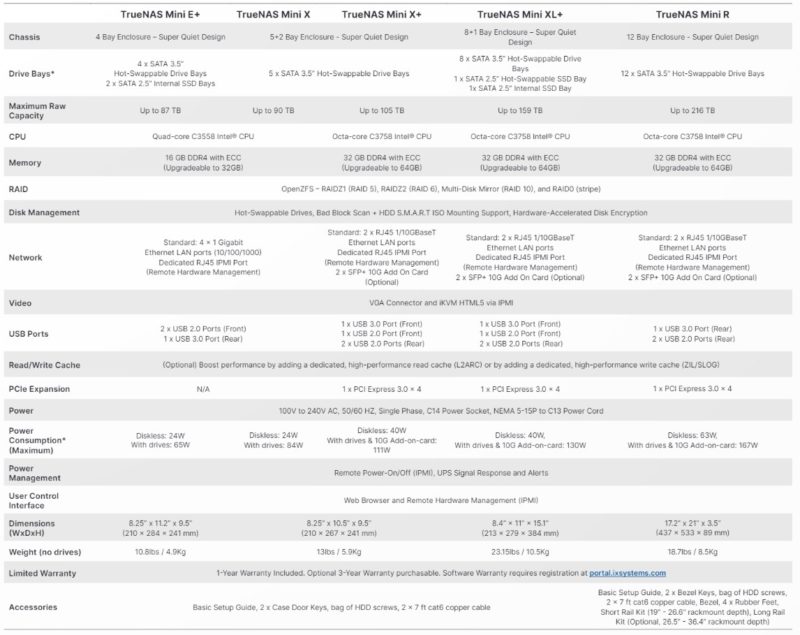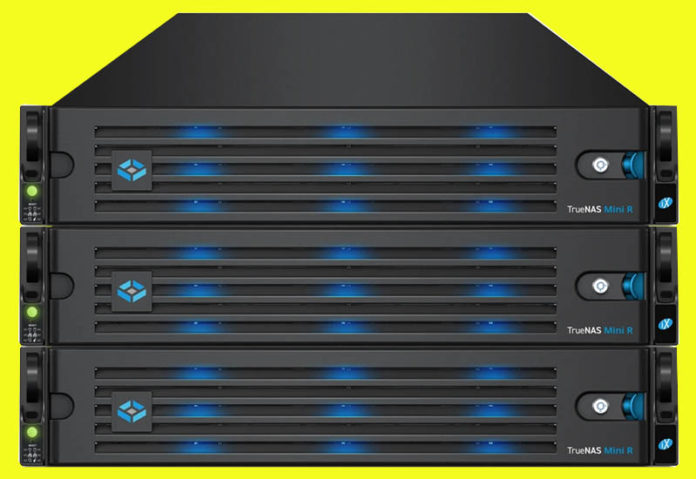For years, we have been working with FreeNAS and now TrueNAS. Today we are covering two announcements. First, the newest TrueNAS Scale 22.12.1 is out. Second, we finally have some new hardware with the TrueNAS Mini R. R is rack-mountable. This is a great expansion to the TrueNAS Mini line, albeit with a fairly ancient processor inside.
TrueNAS Scale 22.12.1 Released
TrueNAS Scale 22.12.1 is out. This is a dot release to the Bluefin version of TrueNAS Scale. For those who do not track this closely, TrueNAS Core is effectively the newer version of FreeNAS built upon FreeBSD. TrueNAS Scale is the next-generation scale-out platform built on Linux.

As a dot release, this is a stability release rather than a major new version. Some of the fixes, for example, include performance improvements and some Kubernetes updates. iXsystems says that it recommends enterprise users wait until the next dot release to upgrade. If you want to learn more about this, check out the release blog here.
In the screenshot above, the TrueNAS Mini-R is pictured with the new TrueNAS Scale. That is the new NAS being announced as well.
TrueNAS Mini R Rackmountable NAS Released
The TrueNAS Mini R appears to be the TrueNAS Mini X+’s internals in a 12-bay rackmount chassis. That means it is still using the same 2017-era Intel Atom C3000 CPU as the TrueNAS Mini In 2020, we reviewed the iXsystems TrueNAS Mini X+ ZFS NAS.
We have already started to review the Supermicro A3SPi series with the 2022-generation Atom C5000 series processors. The first board we reviewed in our Supermicro A3SPI-4C-LN6PF Review Intel Atom C5315 Parker Ridge is Here piece. That was a 4 core 10GbE solution. The next board we will review is an 8-core 25GbE version (we have shown the board a few times already this year.) While the pricing for the overall board has gone up with the 25GbE generation, there are additional capabilities. Also, adding a few hundred dollars for the new capabilities is also offset by the fact that these systems start at around $2000 with 32GB and no drives, and go up from there.

There are also 32GB and 64GB RAM options. 10Gbase-T is built-in with the Supermicro A2SDi platform, and there is an option for SFP+ networking via an add-in card as well. The depth of the 2U chassis is 21″ and it can alternatively sport rubber feet for those that simply want a 12-bay TrueNAS Mini. The company says that it is a 45dB idle 52dB peak system, so it is decently quiet, almost as quiet as the Lenovo ThinkStation P360 Ultra under load.

Overall, this looks like an awesome platform, we just wish iXsystems was not releasing a new flagship Mini in 2023 with a six-year-old CPU. Part of that may be the support for the Intel E822 NICs in the new Atom series.
Final Words
We always love iXsystems TrueNAS Mini hardware, and it is great to see a 2U rackmount version that the company made it a point to focus on the noise footprint of the system. The Intel Atom C3758 may be older, but it is still a very capable ZFS storage platform. It just feels like, especially with QNAP now offering ZFS in QuTS Hero, the hardware needs to expand a bit. QNAP has moved to higher-end CPUs that offer a lot more performance, although QNAP charges a premium for its solution. With TrueNAS Scale and the ability to run not just storage but more workloads on the platform, at some point, we hope to see more powerful TrueNAS Mini units, especially in this rackmount form factor.





Yea that’s cringe that they’re still using the same chip they’re using on the 5-bay on the 12-bay. They’re saying run your k3s on us, but then they’re using an anemic old chip. They’d be better off with Xeon E or W
@sonicwand
I think I want to see what the performance is like on this before I pass judgement on the older chip. ZFS as a use case with spinning disks (this is the “mini” line), might not need the faster chips.
Remember it’s a dual 10g nic…it’s going to be ~800MB/s max there and 12 spinners probably won’t saturate that speed either. L2ARC, and ZIL won’t change that either, as it’s only capable of a single m2.
I would be curious to see performance of a 12 drive ZFS2 with encryption enabled…does the cpu fall on it’s face, or could it use a beefier processor.
I don’t care that it doesn’t use the latest Intel Atom…that seems like almost no benefit in this use case, for 2-3x price…though …what’s the price of this vs a QNAP with a 12 bay and xeon?
I’ve built converged 3x Proxmox with Freenas guests and passthru hardware in the lab…it didn’t need much cpu at all, even during scrubs. Though I was only doing zfs1 (w/encryption) and only with 4 disks to each vm, and 10gb interconnects…2vcpu on Xeon was plenty for each freenas. I know it’s not directly comparable, but my gut feels that the cpu isn’t a bottleneck on a zfs san if it’s dedicated.
The other thing to consider is that if the Atom at issue has hardware assist for the parity or crypto there may be more gofast than the Dhrystone reveals.